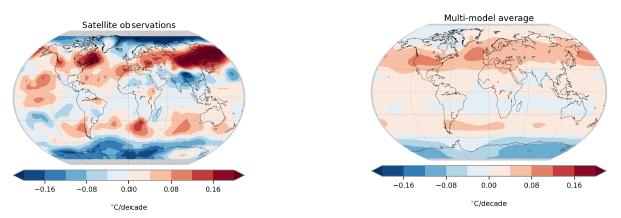Since 1989, Livermore’s Program for Climate Model Diagnosis and Intercomparison (PCMDI) has been closely examining and comparing the results of climate models with observed changes in the climate system.
If climate model results differ from observations or other models, scientists use this difference as an opportunity for learning. Ongoing testing and intercomparison can thus lead to improvement of all models. Although differences in modeling approaches will lead to some degree of variation among climate models and differences with normal variation of weather, multiple runs from multiple models usually reveal consistent trends when the results are combined into an ensemble.
PCMDI plays a large role in the coordination and delivery of the Coupled Model Intercomparison Project (CMIP) suites and the model data that underpin this resource for the global research community. These computer models simulate atmospheric processes, including the water cycle and the effects of human activities and natural phenomena on climate change. PCMDI researchers also inform reports issued by the United Nations–sponsored Intergovernmental Panel on Climate Change (IPCC). PCMDI has been a major contributor to all five assessment reports by IPCC. After the fourth assessment, more than 40 Livermore researchers were recognized when the IPCC was co-awarded the 2007 Nobel Peace Prize for its efforts to “build up and disseminate greater knowledge about man-made climate change, and to lay the foundations for the measures that are needed to counteract such change.”
Learn more about PCMDI
- Contact: David Bader
- PCMDI website
- The Atmosphere around Climate Models (Science & Technology Review, December 2017)
- Clues to Climate Change in Ocean Salinity (Science & Technology Review, December 2015)
- Discerning Humanity’s Imprint on Rainfall Patterns (Science & Technology Review, June 2014)





